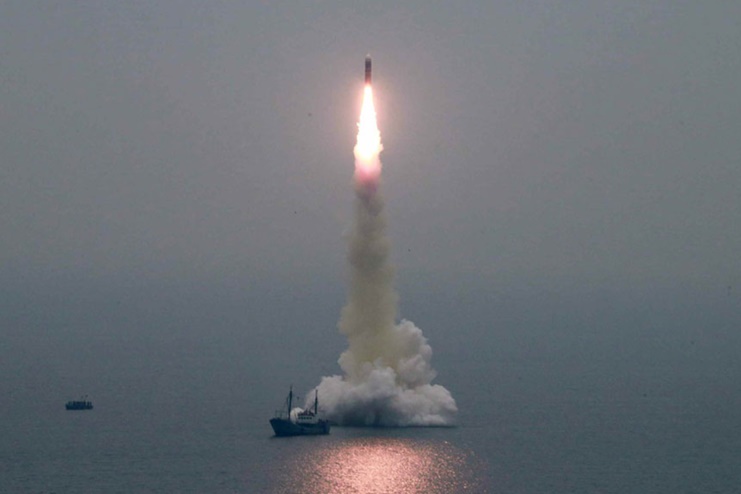North Korea is again raising the stakes. Having urged a change in the US denuclearization calculus in the runup to their “end-of-the-year” deadline for US-DPRK negotiations, North Korean authorities are now fiddling around with an ICBM (inter-continental ballistic missile)-shaped bargaining chip after a lukewarm response from the US. The situation presages a possible return to the “fire and fury” days of two years ago and shows the troubling development of a US-North Korea standoff. But North Korea’s various provocations appear to be plans that tie into the long-standing objective of solidifying North Korea’s “strategic position.”
Having presented the end of the year as the deadline for denuclearization negotiations, North Korean authorities are growing increasingly anxious. As of late, North Korea has gradually been escalating provocations in order to induce the US to act in a desired manner. After displaying the ability to strike US military bases in South Korea by test-firing four different types of new strategic weapons, North Korea eventually engaged in further provocations near the Changrin Islet in the Yellow Sea, in direct violation of the Sept. 19 Comprehensive Military Agreement. This can be understood as North Korea’s warning that the peace regime on the Korean Peninsula, which President Trump has been claiming as one of his key accomplishments, can be undone at any time. Having exhibited the ability to threaten the US mainland with a successful test of the SLBM (submarine-launched ballistic missile) Pukguksong-3 last October, North Korea has recently begun to test the United States’ line in the sand, provoking a sense of crisis.

In a Sunday statement, a spokesperson for North Korea’s Academy of Defense Sciences announced that “On the afternoon of December 7th, 2019, a very important test was undertaken at the Sohae Satellite Launching Station.” It appears that the test was of a high-output engine using liquid fuel for ICBM launches. The academy’s spokesperson emphasized that the results of this significant test will greatly contribute to further strengthening North Korea’s “strategic position.” Although there is some room for disagreement regarding the engine fuel tested that day, what is clear is that the North Korean authorities have publicly addressed the topic of its “strategic position.” Despite President Trump’s hints at the possibility of military action as well as warnings that North Korea has much to lose if it continues to behave aggressively, Kim Jong Un is nonetheless toying with the possibility of an ICBM provocation.
North Korea’s “strategic position” appears to refer to the country’s ability to influence the international community as a nuclear power. Past international negotiations aiming to bring about North Korea’s denuclearization, such as the three-party, four-party, and six-party talks, were all spearheaded by the international community and countries like the US or China. But it seems that North Korea is confident that, having secured a “strategic position,” they will be able to take a more influential role alongside these leader countries. A nuclear armed-North Korea will likely try to lead negotiations over the reduction of nuclear arsenals and the withdrawal of US troops stationed in South Korea for the denuclearization of the Korean Peninsula.
Yet there are still steps remaining before North Korea’s strategic position will be acknowledged by the international community: the acquisition of indisputable nuclear capabilities. Because North Korea is believed to already possess the technology to miniaturize nuclear warheads, the biggest task in front of them is acquiring ICBM reentry technology, which enables ICBMs and their warheads to survive the shock and 7,000 degree Celsius heat when re-entering the atmosphere. North Korea is most likely planning further ICBM test launches in order to develop this technology; indeed, the recent liquid fuel engine output test is almost assuredly part of these efforts.
Given this situation, it is impossible to ignore the feeling that North Korea is methodically following a pre-planned timetable in their provocations. Regardless of any changes in the US calculus, North Korea is moving to secure the strategic position of being a nuclear power. It goes without saying that it is now impossible to denuclearize North Korea. It thus follows that the US-ROK denuclearization strategy was just a waste of two years of negotiations.
The author is a researcher at the Institute for North Korean Studies, the oldest research academy of its kind in South Korea.
*Translated by Violet Kim
Please direct any comments or questions about this article to dailynkenglish@uni-media.net.





















